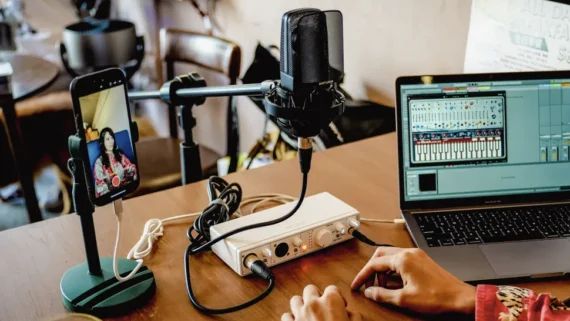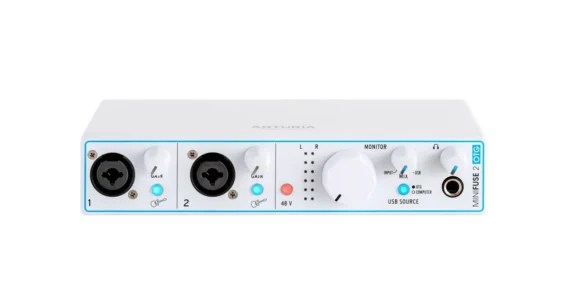Arturia MiniFuse 2 OTG (On The Go)

Arturia has announced a new edition of its MiniFuse 2 audio interface, designed specifically to provide a portable and easy-to-use recording solution for musicians and content creators working with mobile devices.
What sets MiniFuse 2 OTG apart from the previously released MiniFuse 2 is that it features USB OTG (On The Go) connectivity, allowing it to be connected directly to devices such as smartphones and tablets.
They say that it’s designed for people who need to produce live audio content “on the go”, but are struggling to handle complex audio routing.
The interface’s dual USB connectivity allows you to hook up with both a computer and mobile device simultaneously, with flexible routing between the two managed by Arturia’s companion software. This, along with its loopback functionality, makes MiniFuse 2 OTG an ideal choice for streamers and content creators that want a simplified setup for working with multiple audio sources.


MiniFuse 2 OTG’s front panel features dual combo mic/instrument inputs equipped with phantom power, each with a dedicated gain control and level indicator. Alongside this you have a headphone output and monitoring controls that let you toggle between USB connections and blend direct input with USB playback using the Mix dial.
On the back you’ll find stereo TRS outputs, dual USB-C ports and an extra USB-A connection designed to attach a MIDI controller or USB device without using up one of your computer’s ports.
MiniFuse 2 OTG ships with a generous bundle of software that includes Ableton Live Lite, Arturia Analog Lab Intro and a three-month subscription to Auto-Tune Unlimited, alongside a variety of additional software and plugins.
Features:
- 500 vintage & modern keyboard presets with Analog Lab Intro
- Arturia FX Suite:
- Rev PLATE-140 reverb
- Pre 1973 vintage preamp
- Delay TAPE-201 echo
- Chorus JUN-6 analog chorus
- Tutorials – learn recording, streaming, and production basics with MiniFuse
- Exclusive content – tips, tricks, and advice from industry experts
- Dedicated online portal – access everything you need in one place
- Subscriptions – complimentary introductions to world-class audio & mixing services
- 2 x combo Mic/Inst/Line XLR inputs with 48V phantom power and instrument/line level switch
- 2 x 1/4 TRS balanced line outputs with dedicated monitor level control
- 1 x stereo headphone output with independent volume control
- Dual USB connectivity – connect computer + phone/tablet simultaneously (OTG & main USB)
- Direct Monitor & USB Source selector – blend between DAW, OTG, or both for flexible monitoring
- Loopback function – capture computer audio for streaming or recording
- Direct mono summing – set via MiniFuse Control Center
- 1 x USB2 type A hub (200mA max.) for MIDI controller or USB device
- Compatible with thunderbolt via 3rd party adapter
- Backlit gain knobs with real-time overload indication
- Bus-powered USB-C interface – class-compliant, compatible with PC, Mac, tablets & mobile devices
- *OTG-port is data-only and does not power or drain connected devices
Here’s MiniFuse 2 OTG Video Tutorial:
The Arturia MiniFuse 2 OTG is available now for $219.





